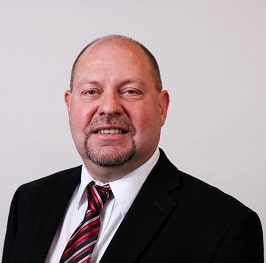How FMC and TFM Work Together for More Effective Ultrasonic Inspections

By Guy Maes, Zetec Sales Engineer Director – UT
As the capabilities of phased array ultrasonic instruments and software evolve, more inspection service providers want to add Full Matrix Capture (FMC) and advanced algorithms like the Total Focusing Method (TFM) to their repertoire. New ASME guidelines for technicians are raising the profile of FMC and TFM as well: a mandatory Appendix XI on Full Matrix Capture was recently added to ASME Code Section V, and guidelines for dedicated training and certification are underway.
With the right phased array UT tools and training, a technician can use FMC and TFM to detect virtually all welding flaw types and provide reliable through-wall sizing capability in a single inspection sequence, with the added benefit of increasing the productivity of the inspection crew simply by reducing the number of scans and manipulations.
What is FMC and TFM and how do they work together?
Phased array UT uses multiple independent elements (typically from 16 to 64) in a single probe. This makes it possible to capture and store all time-domain signals (A-scans) from every transmitter-receiver pair of elements in the array, a technique called Full Matrix Capture or FMC.
FMC allows this “full matrix” of raw A-scan signals to be processed in real time or saved for offline processing using different sets of reconstruction parameters for any given focal law or beam (aperture, angle, or focus depth), or by using so-called advanced focusing techniques.
One of these advanced algorithms is TFM, which uses FMC data to produce high-resolution two- and three-dimensional images for defect characterization and sizing.
TFM sums the elementary A-scan signals from all elements in the array to generate a frame of pixels where each individual pixel is computed using a dedicated focal law. These frames can be used for “live” interpretation or they can be stored for each position of the probe, similar to a “dynamic” merge view in regular phased array.
Ideal Focusing
In theory, TFM should result in one perfectly rendered focal point per pixel. In practice, the near-field length of the considered probe defines the maximum depth at which a sound beam can be focused; a beam cannot be focused beyond the near field.
Ultimately, the choice of proper TFM frame resolution depends on the component thickness, the wave mode, L-waves or S-waves, and the probe frequency.
For example, TFM has the capability to conserve ideal focusing over a much larger region as long as the region of interest is in the near-field of the active aperture. For thicker components, a large aperture is required both in standard phased array and TFM to be able to focus in the complete region of interest. In other cases, for thinner components, a large active aperture is not always required.
For instance, to perform corrosion inspection on components between 5 and 15 mm thick, it can be an advantage to use a smaller aperture to generate the TFM frames. In these thin components, only the probe elements close to the defects will adequately contribute to the imaging.
Typically, the operator has to calculate the ratio between the resulting pixel size and the wavelength, and also the amplitude fidelity, which is the maximum possible amplitude error with the given settings. Advanced portable phased array UT instruments like TOPAZ64 with the UltraVision software platform can make all necessary calculations automatically.
TOPAZ64 can also perform a “sliding” TFM with a partial aperture of the probe—for instance, 16 or 24 elements out of 64. This sliding TFM is the equivalent of the electronic linear scan but the moving aperture is used to generate a totally focused signal.
Probe Positions
In most configurations, the optimal probe position for standard phased array will also work very well for TFM. The optimal beam angles for detecting the typical welding defects still apply: OD cracks would be insonified with a 45-degree angle after skip; lack-of-fusion defects (in a V-bevel weld) with 60 degrees after skip; and ID cracks or incomplete penetration with high angles in the first half skip.
It’s important to note that the TFM technique doesn’t use real angle beams—it relies on each individual element of the probe to insonify the defects and receive useful responses. This means there will be contributions from a wider range of angles (and therefore better overall detection capability) but we still want to benefit from the optimal sound paths.
TOPAZ64 Expands Your Capabilities
Zetec’s TOPAZ64 phased array UT instrument with UltraVision software delivers the industry’s most advanced FMC and TFM capabilities in one powerful, portable package. Available in a 32- or 64-channel configuration, TOPAZ64’s ability to save raw A-Scan data is ideal for record-keeping compliance or TFM post-processing without rescanning. It allows inspections to be set up, deployed, and interpreted quickly and efficiently, eliminating the need to import focal law files created with an external calculator or to remote-control the system using advanced PC-based software. As demand for FMC and TFM increases, the right instrument matters. With TOPAZ64, technicians can make faster, more accurate inspections virtually anywhere the job takes them while offering customers the benefits of advanced techniques—including FMC and TFM.
Zetec is a global leader in nondestructive testing (NDT) solutions for the critical inspection needs of industries the world counts on every day. To learn more, contact Zetec today!
